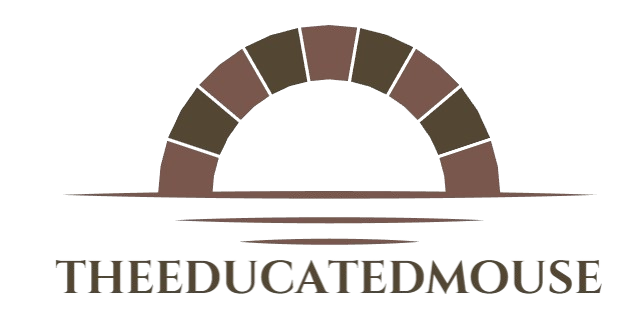Reading aloud to young children is far more than just a pleasant pastime—it’s a dynamic educational tool that fuels imagination, deepens understanding, and cultivates essential social and emotional skills. In early childhood classrooms, read-alouds play a central role not only in literacy development but also in encouraging curiosity, collaboration, and creativity. By selecting engaging texts and pairing them with well-thought-out activities, teachers can turn simple storytelling into a rich, interdisciplinary learning experience.
Beyond the Book: The Hidden Benefits of Read-Alouds
Research consistently shows that reading aloud to children significantly expands their vocabulary and strengthens their listening and comprehension abilities. But the impact doesn’t stop there. When stories are thoughtfully chosen and read with intention, they also nurture emotional intelligence, foster empathy, and introduce critical thinking and problem-solving skills. The emotional cadence of a teacher’s voice, the rhythm of language, and the vivid imagery in picture books provide children with a model for communication, expression, and understanding of the world around them.
Books selected as mentor texts—those with rich language or meaningful messages—can help educators introduce complex concepts in an age-appropriate way. Teachers can use these texts to tie literacy goals with broader learning objectives across subjects such as math, science, social studies, and the arts.
Matching Texts With Objectives
The key to effective read-alouds lies in intentionality. Before selecting a book, teachers should consider what academic or developmental goals they want to address. A well-chosen picture book can serve as an anchor for a multifaceted lesson that touches on literacy, numeracy, creative arts, and even social studies.
Take The Doorbell Rang by Pat Hutchins, for instance. This charming story about a plate of cookies being divided among an increasing number of visitors is more than just a tale of sharing—it’s an excellent introduction to subtraction for young learners. With every knock at the door, students witness cookies being “taken away,” giving them a concrete context for understanding mathematical operations.
Amplifying Impact With Extension Activities
Read-alouds are only the beginning. By integrating extension activities that reinforce the themes and skills introduced in the book, teachers can help children internalize what they’ve learned through play, art, movement, and hands-on practice.
For example, after reading The Doorbell Rang, students can make their own paper cookies with subtraction facts, practice writing numerals as cookies are “eaten,” or write sentences describing the story’s events. These activities not only reinforce math skills but also help develop fine motor skills and early writing abilities.
Similarly, Pete the Cat and the Missing Cupcakes offers a playful opportunity to explore rhyming, sequencing, and subtraction. Students can engage in cupcake-themed crafts, act out parts of the story, or use manipulatives to visualize how cupcakes disappear one by one. By connecting math with music, art, and movement, learning becomes a multisensory experience that sticks.
Stories That Spark Interdisciplinary Learning
Some picture books naturally lend themselves to cross-curricular learning. Eric Carle’s The Very Hungry Caterpillar is a beloved classic that introduces concepts of time (days of the week), nutrition, life cycles, and even weather patterns. After reading, students might sort healthy and unhealthy foods, create their own caterpillar crafts, or sequence the story’s events in order. They can also reflect through writing: “If I were the very hungry caterpillar, I would eat…”—an activity that combines creativity with language development.
In October, The Legend of Spookley the Square Pumpkin brings together literacy, geometry, color recognition, and storytelling. Students can craft their own unique pumpkins using shapes and colors, dictate summaries for display, and share their artistic choices with the class—an exercise in both expression and communication.
Then there’s Balloons Over Broadway by Melissa Sweet, a nonfiction picture book that introduces students to the history of the Macy’s Thanksgiving Day Parade and its visionary creator, Tony Sarge. This read-aloud leads into discussions of fact versus fiction, artistic illustration, and vocabulary-building, while tying into social studies and design. Students can plan and build their own parade floats using balloons and craft materials, culminating in a celebratory classroom “parade” that highlights creativity and engineering.
Building a Framework for Literacy Integration
Teachers don’t need to reinvent the wheel for every lesson. Creating a library of mentor texts with aligned extension activities makes it easier to design units that engage students while meeting curriculum standards. A graphic organizer or bulleted list of possible cross-disciplinary activities can serve as a go-to planning tool.
The overarching goal is to select books that resonate with children—stories that spark laughter, curiosity, or wonder—while aligning them with concrete learning outcomes. When teachers are deliberate in their choices and creative in their delivery, read-alouds become more than a literacy activity. They become a launchpad for exploration, connection, and growth.
Reading With Purpose
Ultimately, what matters most in read-alouds is the intention behind them. When thoughtfully curated and paired with meaningful follow-up activities, stories become the heartbeat of the classroom. They help young learners find their voice, discover their interests, and make sense of both the academic and emotional world.
So, whether it’s subtraction through cookies, the metamorphosis of a caterpillar, or a balloon-filled parade through imagination, reading aloud is a simple act with transformative power. In the hands of a caring, creative teacher, a picture book becomes not just a story—but a window into a world of learning.





